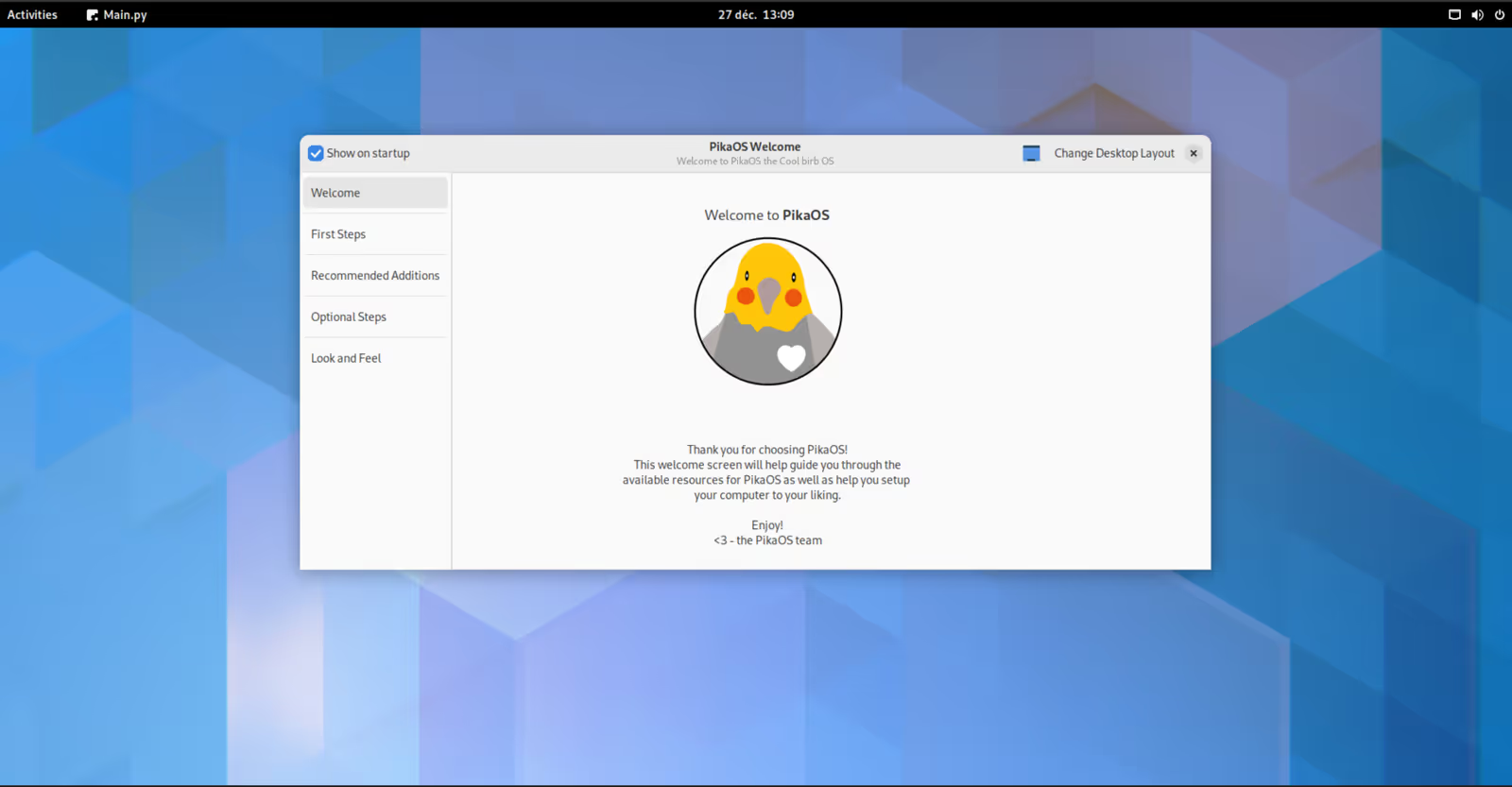
Pikaos iso#
Unless you're planning on installing Fedora (spoiler! it's my favorite) on your machine, you'll have to go ahead and download your desired ISO file. As you can see, you've got the option to download the latest Fedora ISOs as well as an option to pick a custom image file from your drives.
Pikaos install#
Once you've downloaded the program, install it on your system and fire it up. Like the name suggests, Fedora Media Writer is a tool created by Red Hat for making bootable Linux USBs. For this article, I'll go with Fedora Media Writer simply because there are not a lot of tutorials talking about it and because I use it personally.
Pikaos free#
Among all these tools, my favorites are:īoth of these tools are open-source, free to use, and available on pretty much all major platforms. There are multiple tools that can help you to create a bootable Linux USB drive. If you have all of the above ready, you're good to go. You have enough space (25GB) to install Linux on your HDD or SSD.You have a USB drive large enough (4GB) to boot Linux from.You already have Windows installed on your machine.Your computer is using UEFI and not BIOS.To make this entire article approachable, I'm making following assumptions about your system: Some Assumptions I’m Makingīefore I jump into the core of the tutorial, I want to clarify a few things.

Without any further ado, let's grab a mug of coffee or tea or at least water and jump right into the process. Some generally geeky stuff to impress you peers.Common problems, misconceptions, and their solutions, and.
Pikaos how to#
Pikaos full#
That doesn't mean that we no longer need a full blown Linux installation. Microsoft has embraced the open-source community quite cordially in recent years, and as a result we have things like Windows Subsystem for Linux baked right into our Windows installations. My favorite of the six layouts is the Pineapple, which resembles both MacOS and Elementary OS.Gone are the days when Linux and Windows were like two opposing forces. The layouts section is pretty nifty, as it allows you to configure the GNOME desktop to look and feel like a more traditional desktop, a MacOS-like desktop, a Windows 11 layout, a throwback GNOME 2 desktop, and even a Ubuntu Unity-like desktop.Īlso: How to easily share a printer from GNOME desktop

In the Optional Steps tab, you can add AMD proprietary drivers, ROCm drivers, Xone drivers, and Proton GE (for Steam and Wine compatibility).įinally, the Look And Feel tab allows you to customize themes, layouts, and extensions.

When you click through from our site to a retailer and buy a product or service, we may earn affiliate commissions.

And we pore over customer reviews to find out what matters to real people who already own and use the products and services we’re assessing. We gather data from the best available sources, including vendor and retailer listings as well as other relevant and independent reviews sites. ZDNET's recommendations are based on many hours of testing, research, and comparison shopping.


 0 kommentar(er)
0 kommentar(er)
